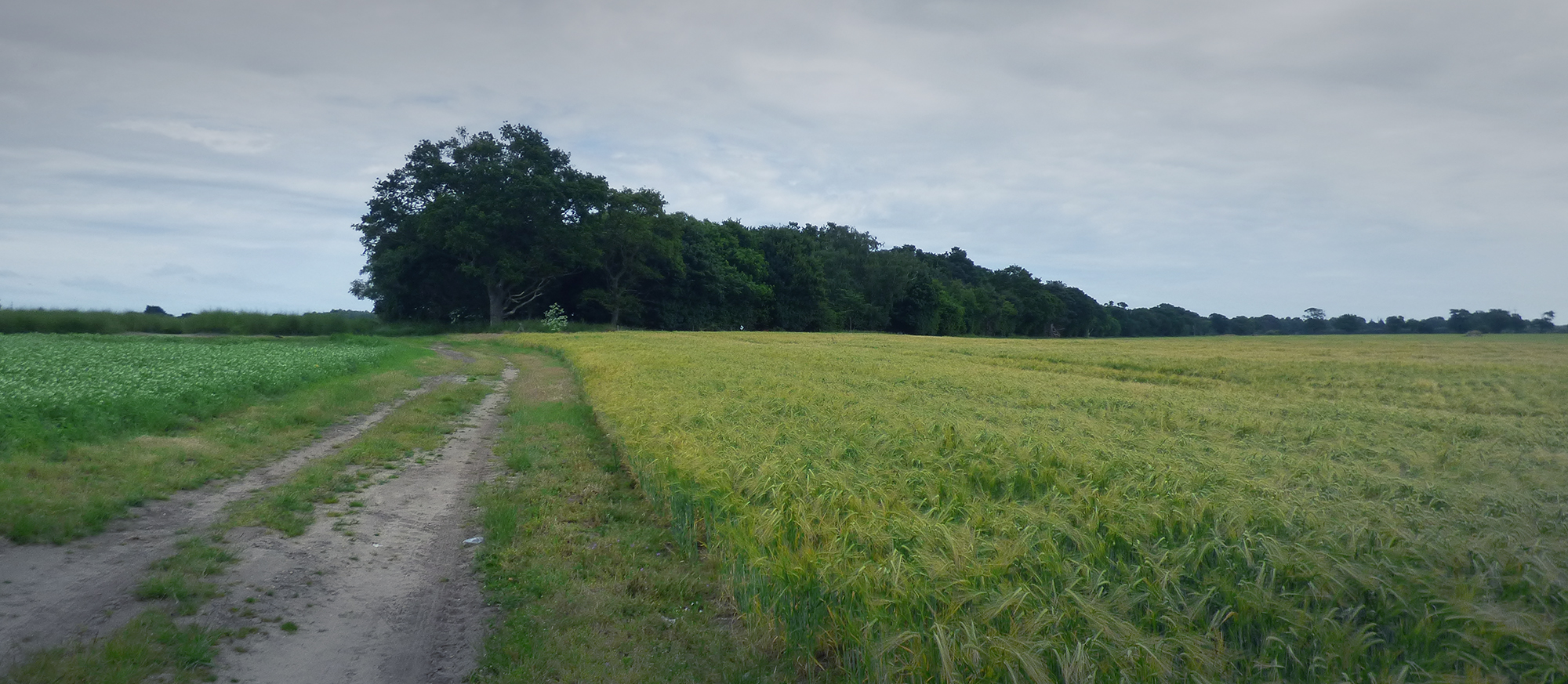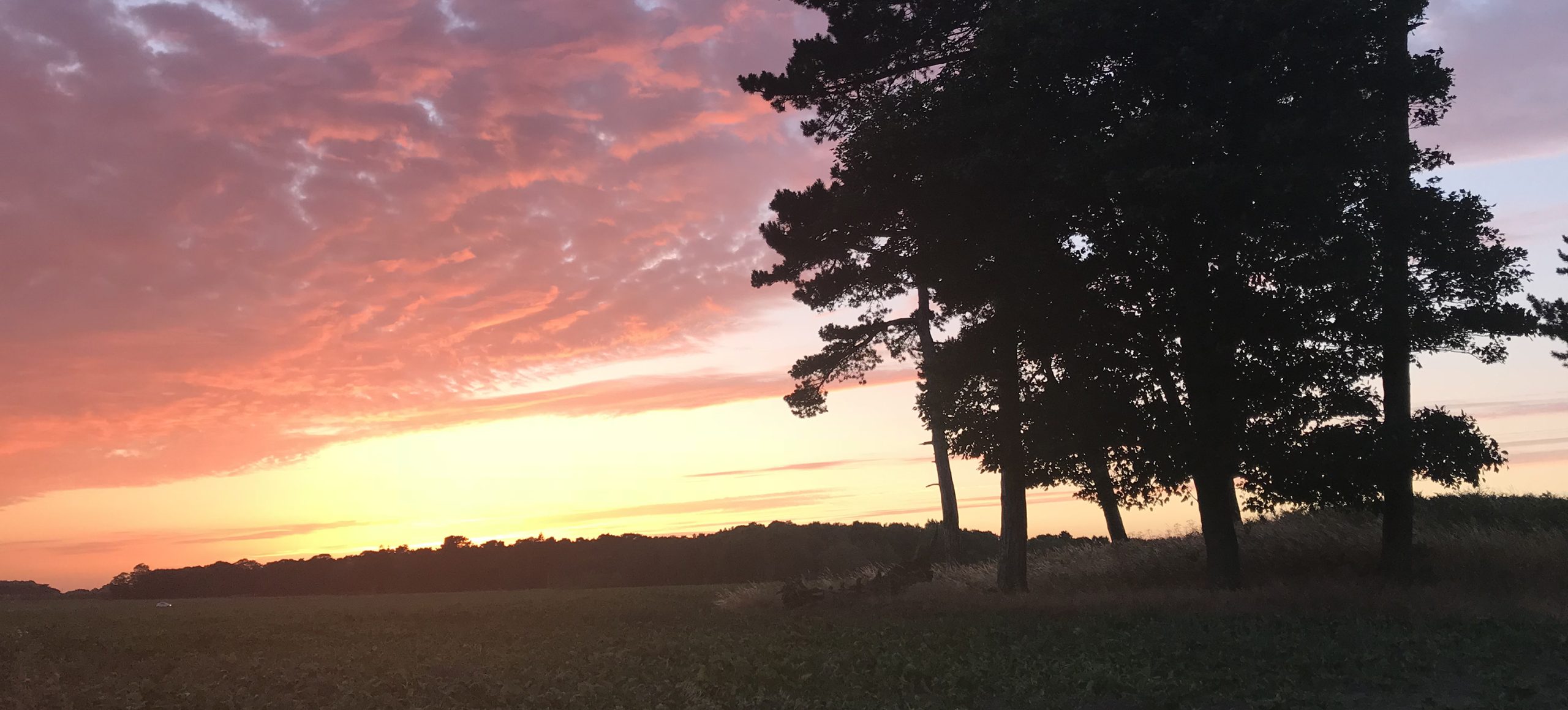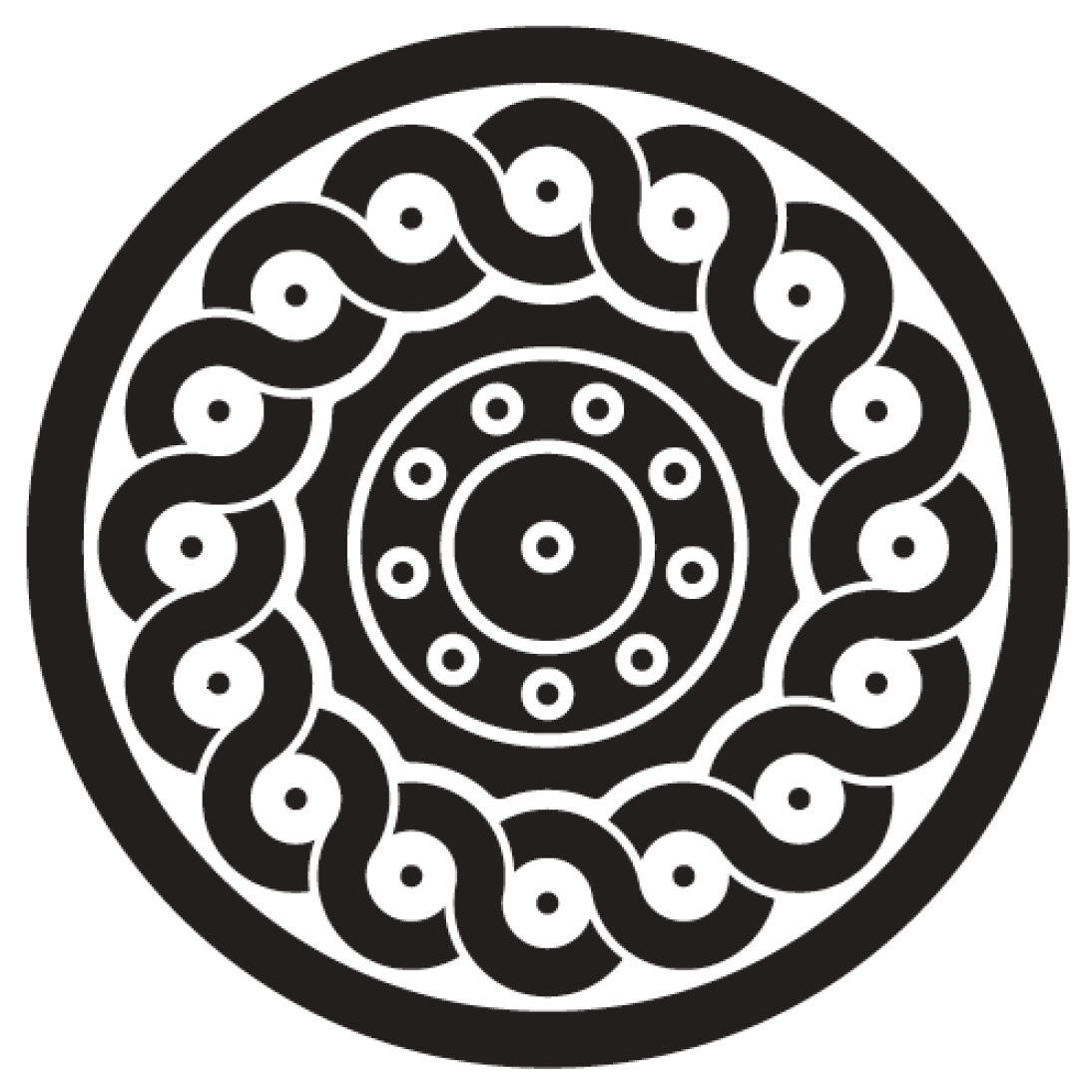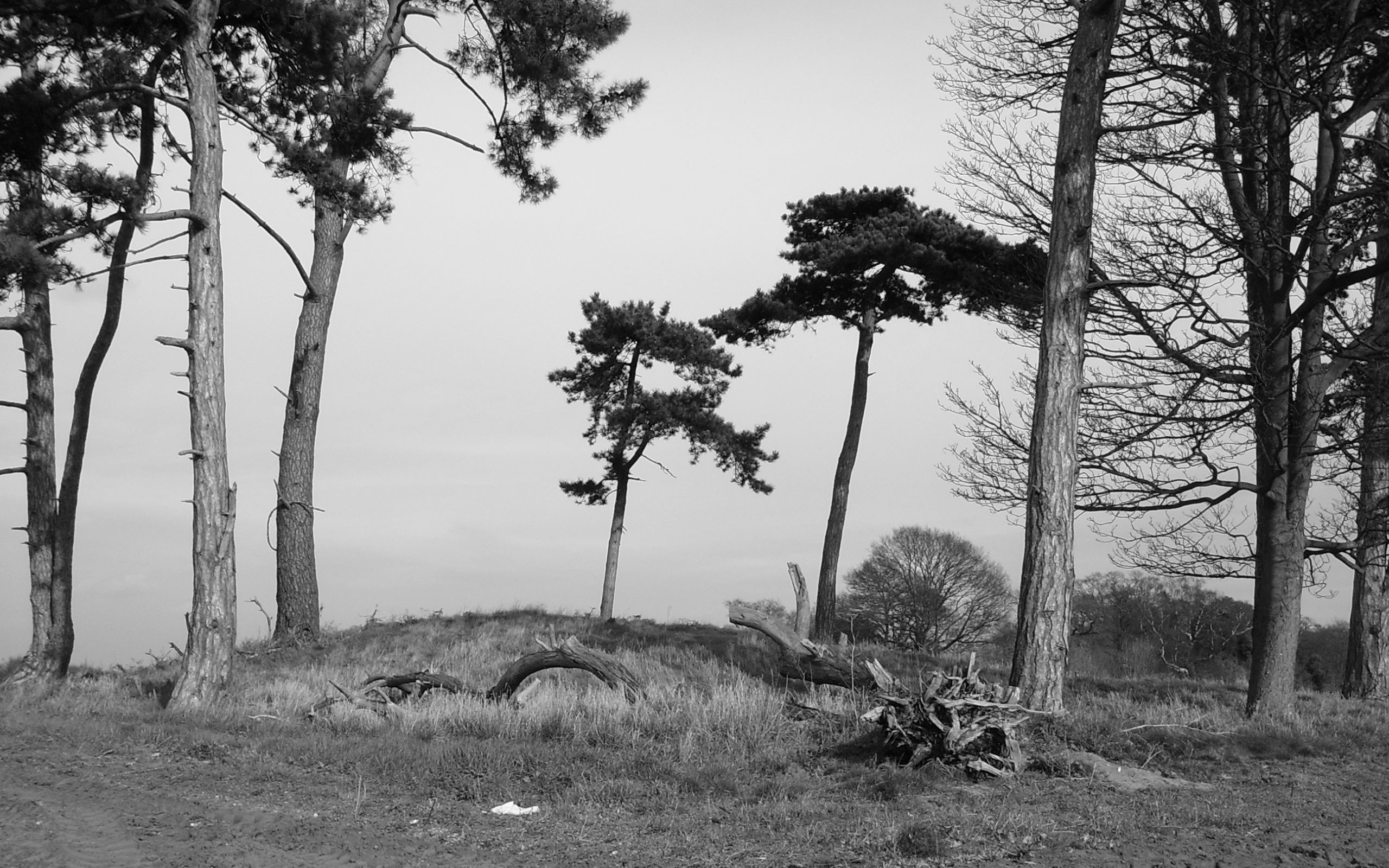The Devil’s Ring and Brightwell Heath
The Devil’s Ring is formed from six distinctive ancient barrows in an area where some 22 are known to exist in Brightwell and on neighbouring heaths at Foxhall, Waldringfield, and Martlesham.
In 1953, just prior to the Devil’s Ring being destroyed so that the land could be levelled for agricultural use, excavations confirmed the largest barrow was approximately 33.5 metres in diameter and 2.03 metres high, with cremation material dating the mounds to 1770 B.C. (+/- 130) [1].

Before that, in 1921 the Suffolk antiquarian Reid Moir [2] published his findings on the excavations of two of the tumuli on Brightwell Heath. The discoveries in one of the smaller tumuli, at just 5.2 metres across were dated at the time to 460 A.D., though now a revised date of late 6th and early 7th C has been proposed. These much later grand finds included a late antique bronze cremation bowl alongside a bone comb and iron rivets. Inside the bronze bowl, a high status and rare cremation vessel along with the charred bones was a glass bead and an ornamental double sided bone disc. The bronze bowl had been covered with cloth tied below the rim, just like the bronze bowl at Sutton Hoo that had three cloths tied around it.

Late antique settlers have been known to situate themselves near to Bronze Age and Neolithic barrows, as was the case at Sutton Hoo, 4 miles to the North East. Ancient round barrows represent the most frequently re-used form of monument [3] in the early medieval period, accounting for 61%. Far from being solely for burial purposes, a survey of 350 barrows in Wiltshire [4] found as many as 35% contained no skeletons, artefacts or cremated remains, indeed 4 of the 6 barrows excavated in 1921 contained no traces of burial at all.
The monumentality of ancient structures enhanced the use as sacred places by constructing idealised visions based around the past, present, and their mythical origins and social identities. How these structures were configured served to structure the ways that people understood both space and time, their purpose therefore may be more symbolic and ritualistic. Ancient places may have been regarded as liminal, timeless. Ideas of an ensouled landscape extended to a belief that the ancestors were both connected and within distinct landscape features, including older Bronze Age round barrows.

The material culture from cremation sites across East Anglia shows urns and other objects decorated with concentric incised patterns, reminiscent of ‘eyes,’ such as the bone disc discovered at Brightwell. From pots to combs, buckets to weaponry, making artefacts ‘see’ was achieved by impressing and punching circular shapes onto them. These abstract designs and circular decorations have been interpreted as an attempt to inscribe and stamp an ocular emphasis onto the urn, the decoration solely for the purpose of creating watchful human and beastly eyes imparting a sense of sentience and sighted onto the dead [5].
Early versions of the Norse cult of Odin had his far-seeing and soul-journeying shamanic manifestations in face-masks and animals with exaggerated eyes, making this an art of transformation, cosmological reconfiguration and intended for seeing into and passing onto other worlds [6].

References
1. Gilyard-Beer, R. (1979) The Devil’s Ring, Brightwell Heath. Proceedings of the Suffolk Institute of Archaeology and History, 34.
2. Moir, R. J. (1921) The Excavation of Two Tumuli on Brightwell Heath.
Ipswich Field Club Journal in Suffolk, Vol. 6.
3. Williams, H.M.R. (1997) Ancient Landscapes and the dead: the reuse of prehistoric and Roman monuments as early Anglo-Saxon burial sites. Medieval Archaeology Vol. 41.
4. Furlong, D. (1997) The Keys to the Temple. Piatkus, London.
5 & 6. Williams, H. (2011) The sense of being seen: Ocular effects at Sutton Hoo.
Journal of Social Archaeology, 11.
